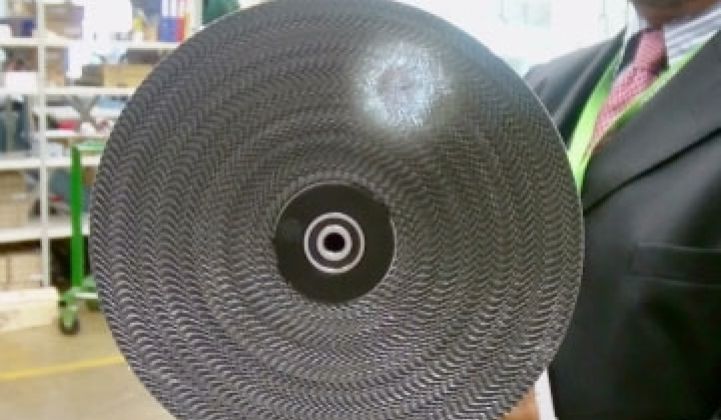PORVOO, Finland -- Finland might be freezing for long stretches during the year, but because of the pervasiveness of energy efficiency technology and regulations, it actually takes more energy to cool an apartment in Madrid than it takes to heat one in Helsinki, according to Timo Luukkainen, President and CEO of the Ensto Group.
Ensto, and concepts such as heat recovery wheels and heat pumps, may not be familiar to you, but give it a few years. California has imposed regulations that will require newly constructed homes to generate as much energy as they use by 2020, and other regions will likely follow suit. While solar will play a large part in net zero homes, efficiency will play a larger part.
And when it comes to saving energy, heat wheels constitute one of the better, if still somewhat obscure, technologies available.
What are they? A heat wheel consists of two aluminum strips -- one flat and one corrugated -- that are wrapped around an axis to form a wheel. The end result looks sort of like a ball of string cut in half, or a jagged all-day sucker.
The wheel is then placed on an axle. One half of the wheel is exposed to the cold air being drawn into the house by the ventilation system. Because the aluminum is warmer than the outside environment, the incoming air -- which flows through the layers of aluminum -- heats up before circulating through the house.
Conversely, the air getting ejected from the house returns heat by filtering through the other half of the wheel, which is now colder because it transferred some heat to the incoming air. The heat pump, another device for transferring heat, amplifies the action.
The end result is a massive energy savings. A 100-square-meter home in Finland at the moment might require 5000 watts to keep warm when the temperature outside is -20 degrees Celsius, and the owners want to keep the indoor temperature at 21 Celsius. Insulation standards imposed in Europe will drop that to 2,500 watts by 2015.
Heat pumps and heat recovery systems will then be able to drop power consumption to 435 watts, Luukkainen said, by pre-heating incoming air to 14 Celsius or more and ejecting air at -17 degrees. In other words, the incoming air only will only require 7 degrees of heating (21 degrees minus 14 degrees), and a good portion of that energy will come from heat absorbed from outgoing air that is 38 degrees cooler (21 degrees minus -17 degrees) than it would be without this sort of heat recovery system.
Luukkainen put one in his own house. When it was minus 28 degrees Celsius outside, the incoming air came in at 22 degrees. He ejected air at minus 22 degrees.
"We were getting 92 percent energy recovery," he said. In summer, the same principle -- aluminum sucks in heat -- works in reverse to cool homes. It also helps dehumidify, and to keep out pollen and harmful substances. The air volume in a given home can be swapped every one to two hours.
"Each year, 2.5 times more people are killed in Sweden and Finland by bad air in homes than by car wrecks," he said. I'm not sure where he came by that figure or whether it takes long-term chemical exposure into account, but it's a great stat.
Heat wheels have been around for about twenty years, but their prevalence has been constrained by their rather sizable footprint. Check out this video of one of the two wheels at the Newark branch of Ohlone College. The wheels work, but they would take up a spare bedroom.
"Ensto's trick has been reducing the size," Luukkainen said. While he would let us film the factory and wheels, we could only look the heat wheels being manufactured. Heat recovery systems are used as air conditioners in the South, but only in a few places in New England.
Efficiency constitutes one of the three primary pillars -- along with smart grid/green IT and biomass -- of Finland's green technology push. The energy crisis of the '70s, strong regulations, a lack of fossil fuel resources and freezing temperatures forced the country to adopt strong conservation measures. BaseN, for instance, is building an energy-efficient data center that will pipe waste heat to homes. In a few years, smart meters will blanket the nation and consumers will be able to buy power as the rates change on an hourly basis on Nord Pool, the multinational exchange.
While the technology developed here is fairly strong, marketing and VC financing, many admit, is not a strong suit, so expect to see a number of Nordic countries try to bridge that gap through partnerships in the U.S.
Ensto, by the way, generates around 170 million Euros a year in revenue and employs 1,250 in Europe and Asia. The company also produces LED lighting control systems powered by radar or infrared technology that can be linked to home security systems.



